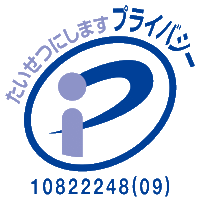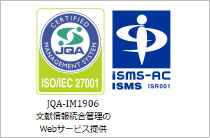ホームIMICライブラリMMWR抄訳2016年(Vol.65)CDC Grand Rounds:青年期 ― 生涯・・・
2016/08/05Vol. 65 / No. 30
MMWR65(30):759-762
CDC Grand Rounds: Adolescence — Preparing for Lifelong Health and Wellness
CDC Grand Rounds:青年期 ― 生涯にわたる健康と健康な状態に向けた準備
2014年、アメリカでは青年期齢(10~19歳)は人口の13%にあたる約4,200万人を占める。この時期は急速かつ著しい身体的、知能的、感情的、心理的成長を遂げ、同時に終生続く健康的または危険な行動が発達する。現在、青年期齢における死因は予期せぬ外傷、自殺、殺人の順であり、非致死的疾病も予期せぬ外傷によるものがもっとも多く、2013年は約400万件発生し、26万名が身体的暴行(性的暴行を除く)により救急外来を受診している。また、ハイスクール生徒の8%が自殺を図り、10代の出産率は減少し続けているが2013年において出生児約273,000名の母親が15~19歳であった。クラミジアおよび淋病は15~19歳の男女にて蔓延しており、患者の25%がこの年代である。また、1日60分の運動が推奨されているが、これを満たす人は27%に過ぎず、さらにハイスクール生徒の約1/3が飲酒しており、23%がマリファナを使用、22%が喫煙している。青年期齢の子どもたちの生活には親の影響が大きいため、家族を基本とするプログラムは彼らの健康的な発達の大きな支えとなり、また、学校を基本とするプログラムは健康的な行動を強化し、危険な行動を抑制する。家族をベースとするアプローチとしては、親の危険に関する知識、スキルおよびリスクを伝える自信、的確なモニタリングと監視、前向きな行動のモデリングおよび子供と強い信頼関係を築くことなどがあり、これらの行動により性的行動、非行、飲酒、喫煙、ドラッグなどの危険行動が抑制される。また、学校をベースとするアプローチとしては健康的な行動に関して学術的な教育を行うことで危険行動が抑制され、また、プライマリケアによるエビデンスに基づく効果的な健康サービス(教育、予防的スクリーニングおよび治療)や地域レベルの健康ケアシステムの確立も青年期齢の健康的行動の確立に有効である。健康的な転帰は青年期齢の時期に確立された健康的な行動に依存するものであり、健康を害する行動(喫煙、飲酒)は避け、健康的な食事と運動は生涯を通じ健康を維持するものである。
References
- US Census Bureau. Age and sex: 2014 American Community Survey 1-year estimates. Washington, DC: US Census Bureau; 2014. <http://factfinder.census.gov/faces/tableservices/jsf/pages/productview.xhtml?pid=ACS_12_1YR_S0101&prodType=table>
- American Academy of Pediatrics. Stages of adolescence. Elk Grove Village, IL: American Academy of Pediatrics; 2015. <https://www.healthychildren.org/English/ages-stages/teen/Pages/Stages-of-Adolescence.aspx>
- Sleet DA, Ballesteros MF, Borse NN. A review of unintentional injuries in adolescents. Annu Rev Public Health 2010;31:195–212. <http://dx.doi.org/10.1146/annurev.publhealth.012809.103616>
- CDC. Vital signs: preventing teen pregnancy. Atlanta, GA: US Department of Health and Human Services, CDC; 2015. <http://www.cdc.gov/vitalsigns/larc/index.html>
- CDC. Sexually transmitted disease surveillance 2014. Atlanta, GA: US Department of Health and Human Services, CDC; 2015. <http://www.cdc.gov/std/stats14/surv-2014-print.pdf>
- Kann L, Kinchen S, Shanklin SL, et al. Youth risk behavior surveillance—United States, 2013. MMWR Suppl 2014;63(No. Suppl 4).
- Kim SA, Moore LV, Galuska D, et al. Vital signs: fruit and vegetable intake among children—United States, 2003–2010. MMWR Morb Mortal Wkly Rep 2014;63:671–6.
- Community Preventive Services Task Force. Improving adolescent health through interventions targeted to parents and other caregivers: a recommendation. Am J Prev Med 2012;42:327–8. <http://dx.doi.org/10.1016/j.amepre.2011.11.009>
- Schuster MA, Corona R, Elliott MN, et al. Evaluation of Talking Parents, Healthy Teens, a new worksite based parenting programme to promote parent-adolescent communication about sexual health: randomised controlled trial. BMJ 2008;337:a308. <http://dx.doi.org/10.1136/bmj.39609.657581.25>
- Guilamo-Ramos V, Bouris A, Jaccard J, Gonzalez B, McCoy W, Aranda D. A parent-based intervention to reduce sexual risk behavior in early adolescence: building alliances between physicians, social workers, and parents. J Adolesc Health 2011;48:159–63. <http://dx.doi.org/10.1016/j.jadohealth.2010.06.007>
- Basch CE. Healthier students are better learners: a missing link in school reforms to close the achievement gap. Equity matters: research review no. 6. New York, NY: Columbia University; 2010. <http://www.equitycampaign.org/i/a/document/12557_EquityMattersVol6_Web03082010.pdf>
- Freudenberg N, Ruglis J. Reframing school dropout as a public health issue. Prev Chronic Dis 2007;4:A107. <http://www.cdc.gov/pcd/issues/2007/oct/07_0063.htm>
- The Joint Committee on National Health Education Standards. National health education standards: achieving excellence. 2nd ed. Atlanta, GA: American Cancer Society; 2007.
- Task Force on Community Preventive Services. Recommendations to increase physical activity in communities. Am J Prev Med 2002;22(Suppl):67–72. <http://dx.doi.org/10.1016/S0749-3797(02)00433-6>
- CDC. School health guidelines to promote healthy eating and physical activity. MMWR Recomm Rep 2011;60(No. RR-5).
- Community Preventive Services Task Force. Recommendations for group-based behavioral interventions to prevent adolescent pregnancy, human immunodeficiency virus, and other sexually transmitted infections: comprehensive risk reduction and abstinence education. Am J Prev Med 2012;42:304–7. <http://dx.doi.org/10.1016/j.amepre.2011.11.006>
- Wang LY, Vernon-Smiley M, Gapinski MA, Desisto M, Maughan E, Sheetz A. Cost-benefit study of school nursing services. JAMA Pediatr 2014;168:642–8. <http://dx.doi.org/10.1001/jamapediatrics.2013.5441>
- CDC. Results from the School Health Policies and Practices Study 2014. Atlanta, GA: US Department of Health and Human Services, CDC; 2015. <http://www.cdc.gov/healthyyouth/data/shpps/pdf/shpps-508-final_101315.pdf>
- CDC. School connectedness: strategies for increasing protective factors among youth. Atlanta, GA: US Department of Health and Human Services, CDC; 2009. <http://www.cdc.gov/healthyyouth/protective/pdf/connectedness.pdf>
- US Preventive Services Task Force. What is the task force and what does it do? Rockville, MD: US Preventive Services Task Force; 2016. <http://www.uspreventiveservicestaskforce.org/>
- Adams SH, Park MJ, Irwin CE Jr. Adolescent and young adult preventive care: comparing national survey rates. Am J Prev Med 2015;49:238–47. <http://dx.doi.org/10.1016/j.amepre.2015.02.022>
- Community Preventive Services Task Force. Promoting health equity through education programs and policies: school-based health centers. Atlanta, GA: US Department of Health and Human Services, CDC; 2015. <www.thecommunityguide.org/healthequity/education/schoolbasedhealthcenters.html>
- American Academy of Pediatrics (AAP). Health reform and the AAP: what the new law means for children and pediatricians. Elk Grove Village, IL: American Academy of Pediatrics; [undated]. <https://www.aap.org/en-us/advocacy-and-policy/federal-advocacy/Documents/ACAImplementationFactSheets.pdf>
- National Adolescent and Young Adult Health Information Center. The Affordable Care Act: implications for adolescents and young adults. San Francisco, CA: University of California; 2012. <http://nahic.ucsf.edu/resources/aca/>
- Society for Adolescent Health and Medicine; American Academy of Pediatrics. Confidentiality protections for adolescents and young adults in the health care delivery and insurance claims process. J Adolesc Health 2016;58:374–7. <http://dx.doi.org/10.1016/j.jadohealth.2015.12.009>
Copyright © 2013 International Medical Information Center. All Rights Reserved.












